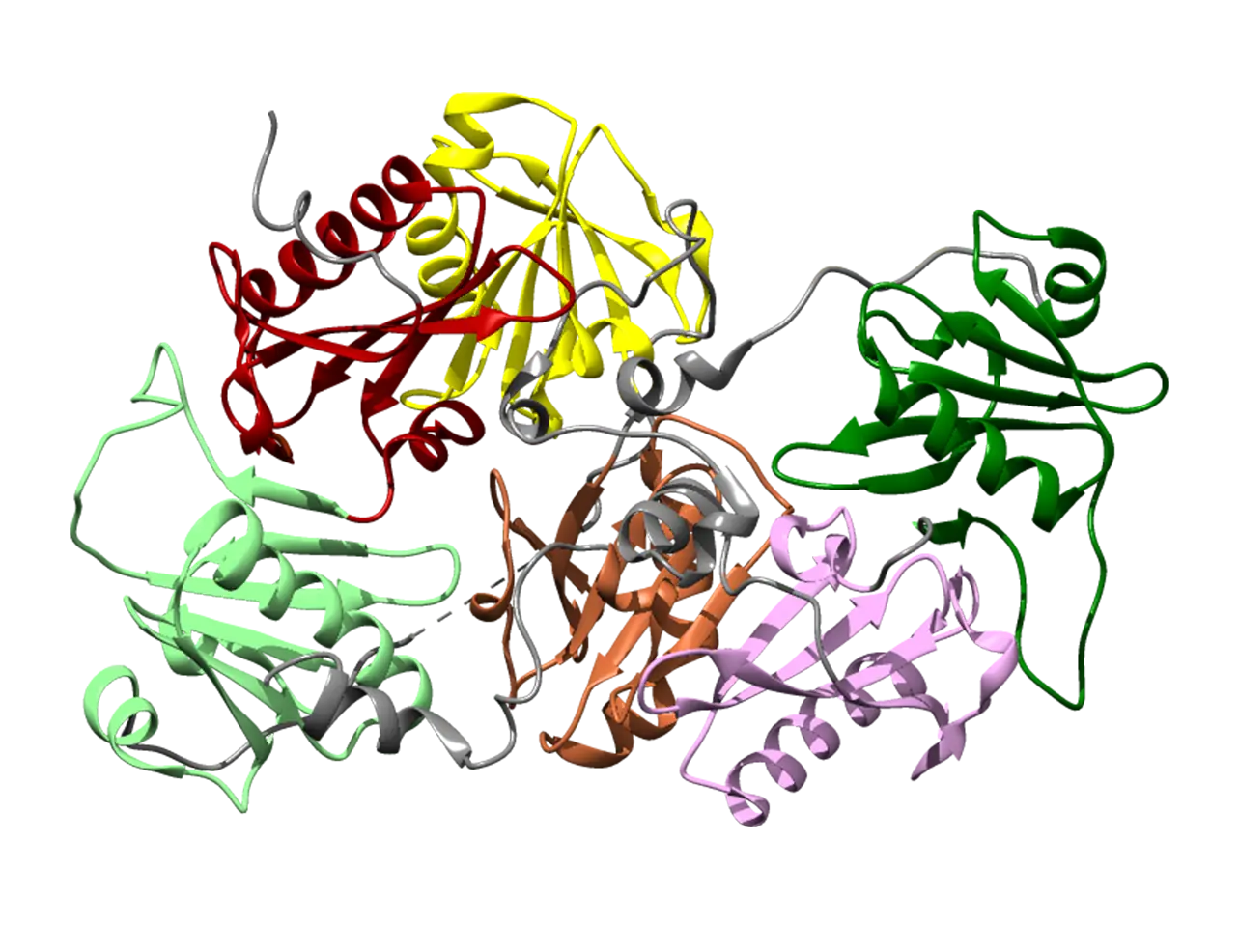Plasma Gelsolin's Biological Role:
Master Regulator of Inflammation
Plasma gelsolin (pGSN) is an ancient, highly conserved plasma protein that is abundant in healthy individuals. Its primary role is to keep inflammation localized to the site of injury and enhance the function of the innate immune system.
Multifaceted Mechanism of Action
Plasma gelsolin’s non-immunosuppressive mechanism enables the host to mount a pathogen-agnostic response to infection while also avoiding the dysfunction of uncontrolled inflammation. In multiple animal disease models, administration of rhu-pGSN improves survival, reduces morbidity and protects critical organs.
Scavenges Toxic Actin and Clears Cell Debris
pGSN travels to the site of injury and clears actin that is released from cells and is a cause of many inflammatory and immunosuppressive functions. This also clears biofilms and cell-free DNA/NETs.
Clinical Benefit:
Counters the immunosuppressive action of biofilms and actin.
pGSN is pathogen-agnostic and has demonstrated improved antimicrobial defense in multiple gram-positive and negative resistant and sensitive bacterial strains.
Activates NOS3 Pathway Which Enhances Microbial Killing
pGSN directly interacts with the white blood cells (macrophages) and activates a NOS3 pathway within the cell.
Clinical Benefit:
This enhances the macrophage killing of a wide range of microbial pathogens – antibiotic sensitive or antibiotic resistant.

Binds to Inflammatory Small Molecule and Microvesicle Mediators of Inflammation
As the inflammatory response accelerates to deal with the threat and begins the healing process, the systemic reservoir of pGSN in the blood prevents the potential spread of inflammation by binding to and neutralizing these mediators.
Clinical Benefit:
Prevents the spread of inflammation thereby protecting otherwise unaffected organs.
Mitigates microparticle driven inflammation.
Counteracts the pervasive inflammatory mechanism of the NLRP3 inflammasome.
Regulates Macrophage to Shift from Inflammatory to Healing Phenotype
Quorum-sensing, a property associated with cell density and well-known in bacteria for decades has now been discovered in macrophages. These cells are able to detect their population density and respond by either increasing or decreasing their activity. Quorum-sensing guides the transition of the macrophage from an inflammatory (M1) to an anti-inflammatory (M2) phenotype. pGSN was recently discovered to control this process and is the quorum sensor released from high-density macrophages, shifting the macrophage phenotype from M1 to M2. This temporal regulator for the finetuning of the inflammatory response plays a crucial role in limiting the risk of a dysfunctional hyperinflammatory state.
Clinical Benefit:
Ensures that the inflammatory process designed to “clear debris” does not get out of control.
Controls the shift to “healing mode”.
“There are many layers to the science underlying gelsolin’s role as a master regulator in immunity.
The more we learn about this key signaling protein, the more we look forward to bringing rhu-pGSN to patients.”
– Dr. Susan Levinson, CEO of BioAegis
Depletion of Plasma Gelsolin is Associated with Poor Outcomes
Plasma gelsolin is produced by every cell in the body at a steady state. The normal systemic supply becomes depleted as a result of clearing cell debris and binding to inflammatory mediators in response to cell damage, caused by both infectious and non-infectious inflammation. This leaves the body exposed to the ravages of an unrestrained immune response and can lead to distal organ failure.
Our approach is simply to supplement this naturally occurring human protein with the recombinant protein, rhu-pGSN.

Efficacy Demonstrated in >20 Models in Independent Labs
![]() Enhanced Microbial Uptake and Killing in Human Alveolar Macrophages
Enhanced Microbial Uptake and Killing in Human Alveolar Macrophages
![]() Gram Positive
Gram Positive
![]() Gram Negative
Gram Negative
![]() Influenza
Influenza
![]() Infectious Peritonitis
Infectious Peritonitis

INFECTION

Inflammation/CV/Metabolic
![]() Ischemic Stroke Model
Ischemic Stroke Model
![]() Inflammatory Bowel Disease
Inflammatory Bowel Disease
![]() Diabetes Type 2: Multiple Models
Diabetes Type 2: Multiple Models
![]() Pain: Central/Periheral Models
Pain: Central/Periheral Models
![]() Alzheimer’s Disease
Alzheimer’s Disease
![]() Multiple Sclerosis (EAE)
Multiple Sclerosis (EAE)
![]() Neuroinflammation
Neuroinflammation

Neurological

INJURY/TRAUMA
![]() Burns – Lung Microvascular Permeability
Burns – Lung Microvascular Permeability
![]() Radiation Exposure
Radiation Exposure
![]() Hyperoxia Acute Lung Injury
Hyperoxia Acute Lung Injury
Collaborating With Over 20 Institutions Worldwide

BioAegis has established collaborations with a number of leading investigators. These collaborations enhance the ability to recognize additional commercial opportunities, extend the research effort that is ongoing in its own laboratory, and refine and drive current programs forward.
